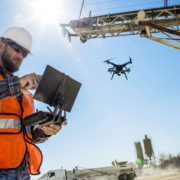The Steady Digital Transformation of the Construction Industry
At first glance, it might appear that the speed at which most construction companies have been adopting new technological advances has been “slower than dial-up” when compared to other industries such as communications, transportation, and manufacturing. Digitalization has helped those industries transform their business models and generate new revenues. It is only in the last decade that construction firms have begun to employ digital technologies on a grand scale. That’s somewhat understandable when you look at the nature of the construction business.
There Are Unique Challenges to the Digitalization of Construction
Unlike other industries, each construction project is unique and nearly impossible to replicate in high volumes with consistent results. On different jobs, construction professionals might be dealing with shifting budgets, schedule conflicts, accidents, failed deliveries, cybersecurity considerations, or adverse weather conditions – any of which might require changes to the original specifications of their project.
Trends Toward Digitalization Are Happening
Despite these obstacles, the pursuit of higher productivity is driving more and more construction companies to digitalize their operations wherever applicable. For example, drones are being used for site inspection and to locate potential hazards on bridges or buildings, while robots are being used for brick and mortar tasks. Other digital applications include:
Artificial Intelligence (AI)
From preconstruction to operation and maintenance, AI is being applied at every stage of the construction cycle. With computer vision, AI can support digital modeling and optimize sequence tasks and blueprint divergences.
Autonomous Equipment
Sensors and GPS have opened up exciting applications for self-driving trucks, helping to fill the gap in labor shortages that are plaguing many construction companies. One such application involves using computerized machines to complete onsite excavation and grading.
Supply Chain Management
More advanced software enables companies to hire workers and procure equipment and materials by matching supply with demand. This improves productivity and transparency in competitive bidding.
Collaboration Between Job Sites and Offices
Communication breakdowns caused by the incompatibility of technology between multiple sites can be solved with mobile applications that enable real-time communication, simultaneous notetaking, and the amending of drawings and Request For Information templates. Building Information Modeling (BIM) also enables real-time changes to 3D models. When combined with virtual reality and augmented reality, BIM can create a virtual construction overlay to simulate the real construction environment.
Rapid Restoration & Construction embraces these innovative technologies as major breakthroughs, helping us in our ongoing quest for safer and more productive work processes, leading to even higher quality results.



 10201 W. 43rd Ave
10201 W. 43rd Ave
 303-412-9999
303-412-9999

